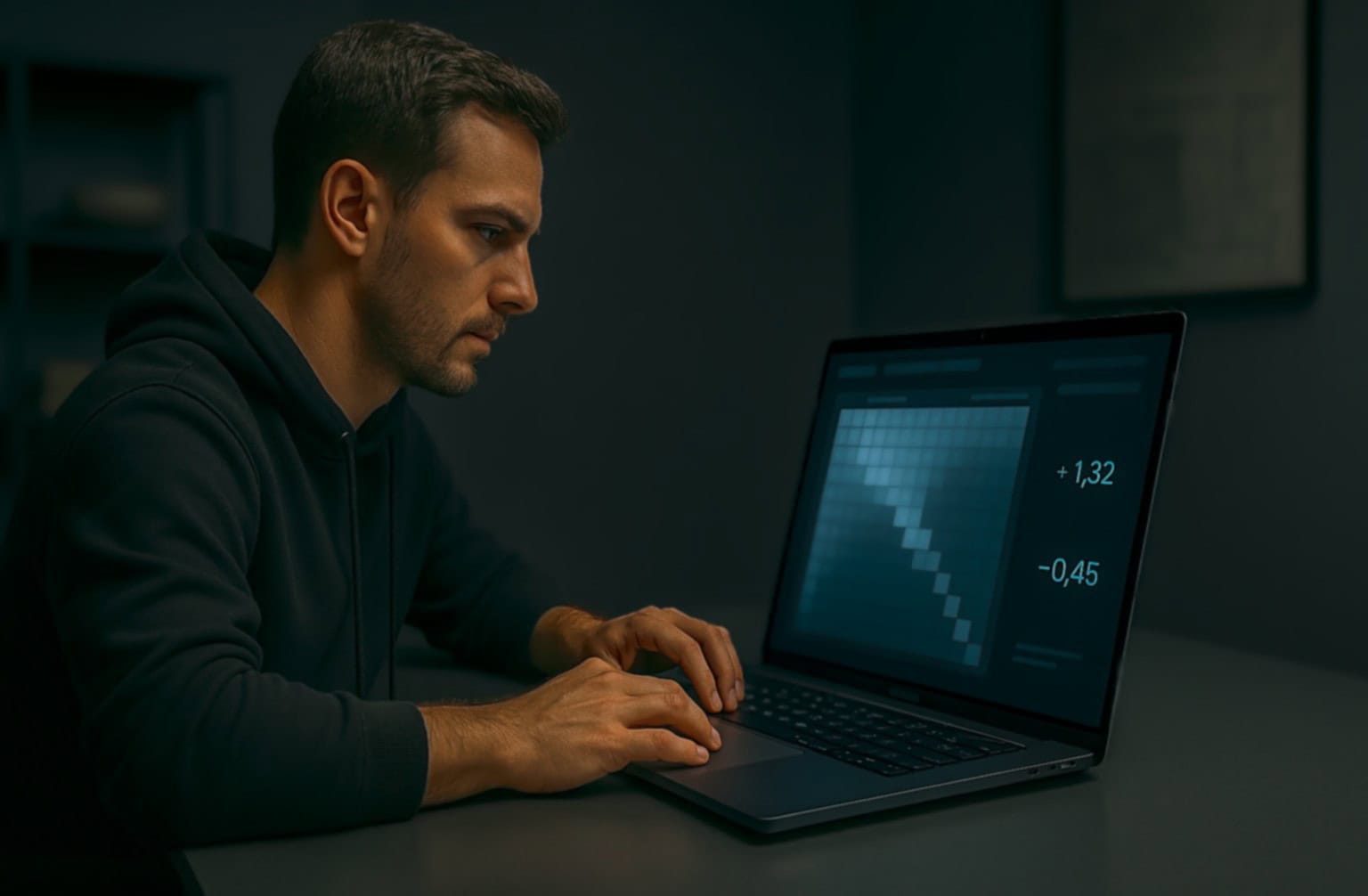
AI Poker Tools for Tournament Wins and Strategic Edges
There’s a quiet revolution happening in tournament poker – and no, it’s not just better sunglasses or new HUD overlays.
It’s artificial intelligence.
Today’s top grinders aren’t just reviewing hand histories. They’re running simulations, drilling exploit strategies, and optimizing every spot with the help of AI poker tools. From solvers to real-time assistants (and the ethically gray in between), AI is now the secret sauce behind many deep runs and final tables.
So how exactly are players using poker bots and AI tech to win tournaments? What tools matter most? And where’s the line between smart study… and a poker cheat?
Let’s break it down.
What Makes Tournaments So AI-Friendly?
Unlike cash games, tournament poker is messy, chaotic, and ever-changing:
- Stack sizes shift constantly.
- ICM pressure changes every spot.
- Opponents range from maniacs to stone nits.
- Game flow and mental fatigue play huge roles.
AI thrives in chaos. Tools powered by neural networks and solver logic can process thousands of variables per spot – way more than any human mind. That’s why ai poker bot technologies have found a particularly strong home in tournaments.
But it’s not just plug-and-play.
The best tools are used strategically – before, after, and even (for some) during play.
The Core Stack: AI Tools Tournament Pros Actually Use
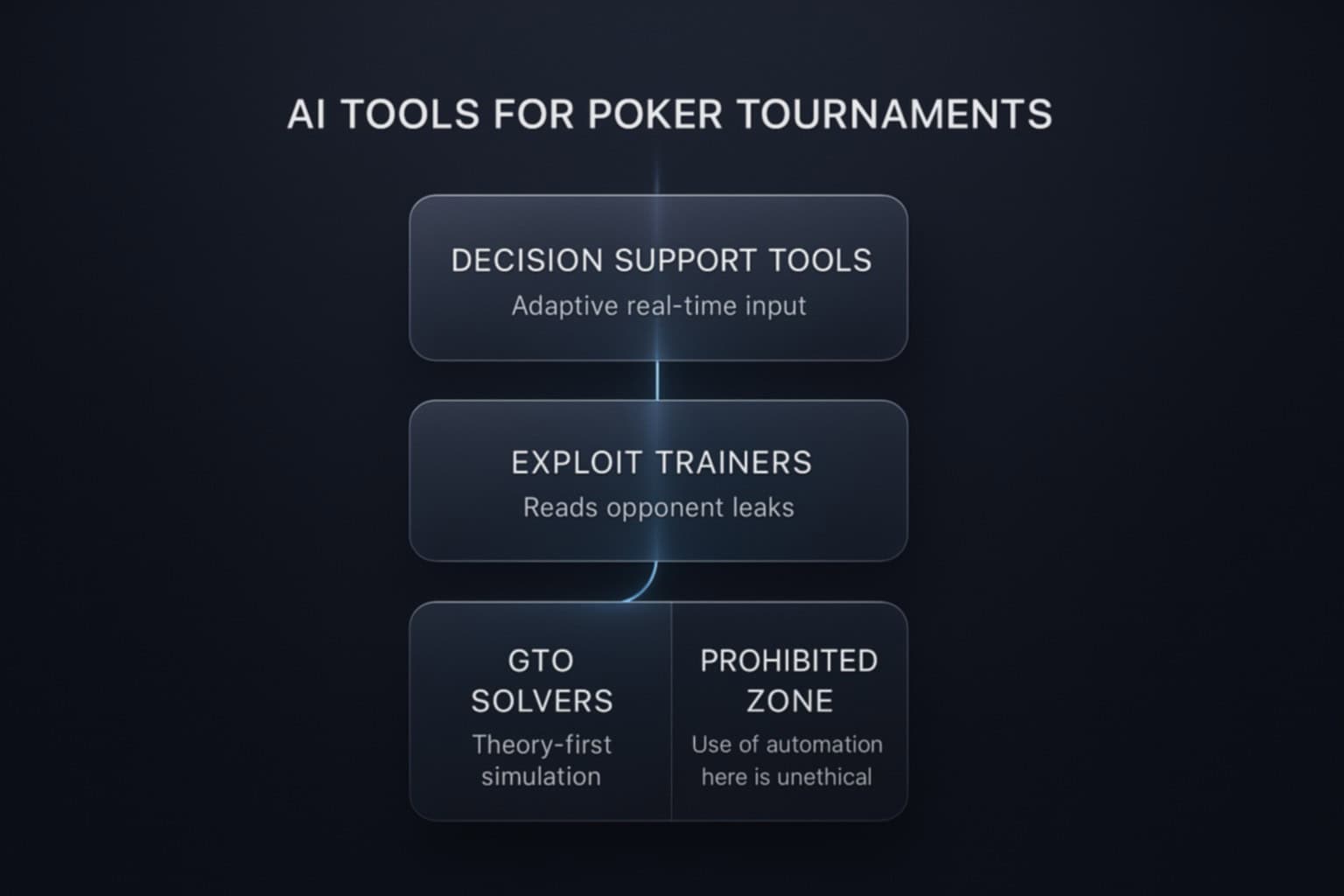
Here are the key categories of AI tools used in the tournament trenches:
- GTO Solvers (e.g. PioSolver, Simple Postflop)
These simulate game theory optimal strategies for a given range vs range matchup. Perfect for:
- Building preflop charts by position and stack size
- Studying c-bet frequencies on various textures
- Understanding turn and river barreling ranges
Downside? They’re slow and inflexible during play – best for study.
- Exploit Trainers (e.g. Crayfish, Odin)
These tools simulate not just GTO, but also what happens when your opponent deviates. You can:
- “Node lock” an opponent’s range (e.g., wide limp-call)
- See how to punish that leak
- Drill scenarios in rapid-fire quiz formats
They help bridge the gap between solver theory and real-world opponents.
- AI Poker Bots / Assistants
Here’s where it gets spicy.
Some tools (like AlphaHoldem or underground AI bot clients) simulate decisions in real-time, suggesting plays based on live inputs. While ethically questionable, many of them:
- Use solver-trained models
- Weigh ICM pressure
- Adjust to opponent types (passive, LAG, reg)
This is the domain of poker cheat software and poker now hack systems – illegal on most sites but actively used by some.
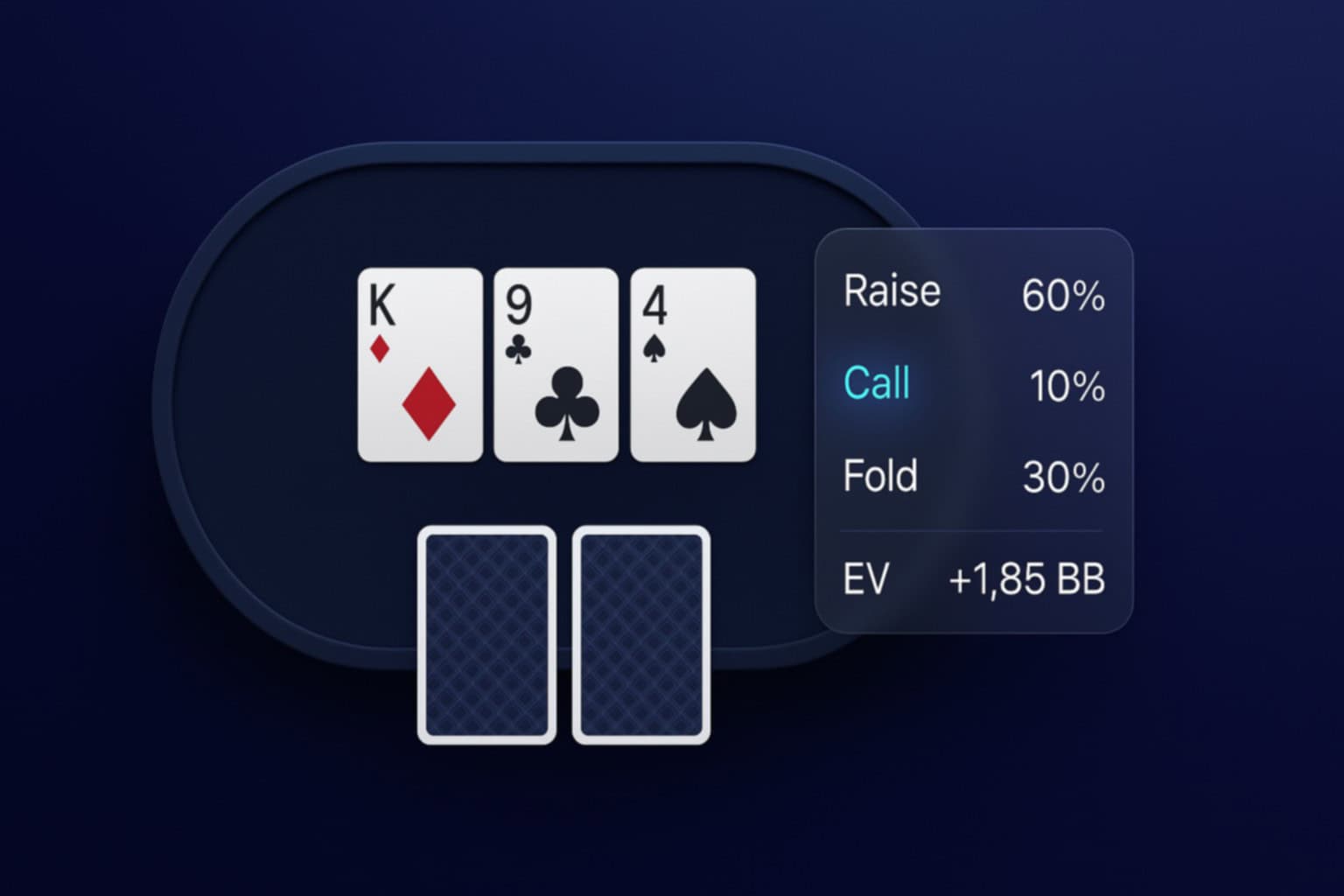
The Tournament-Specific Edge
Why do AI tools thrive in tourneys?
- Short stack depth: Many spots are push/fold or 3-bet-or-fold. AI is great at solving these limited-tree decisions.
- ICM pressure: Humans misplay bubbles constantly. AI calculates ICM equity shifts instantly.
- Field diversity: From whales to wizards – AI can adapt patterns faster than you can take notes.
- Multi-tabling optimization: While a human might miss a close spot on Table 4, an AI tracker won’t.
The result? Players who use AI effectively can make fewer mistakes – and punish those who don’t.
How AI Tools Are Used Legally (and Illegally)
Let’s clarify.
Using AI tools outside of live play – to study ranges, review hands, train intuition – is completely legal (and smart).
Examples:
- Creating your own poker cheat sheet pre-tourney
- Training 3-bet jam spots for <20BB
- Reviewing tough final table hands using ICM solvers
However…
Using AI during play – especially if it provides direct recommendations – is considered Real-Time Assistance (RTA) and is banned on all major sites.
This includes:
- Running sims while you play
- Having a poker bot suggest actions in real time
- Using poker online bots to auto-play tournaments
Sites like PokerStars and GGPoker have AI detection systems in place – and yes, they work. Ban waves have hit players who got lazy or greedy.
If you’re asking: “But what if I only use it once in a tough spot?” – it’s still cheating. And if caught, you lose your account, bankroll, and reputation.
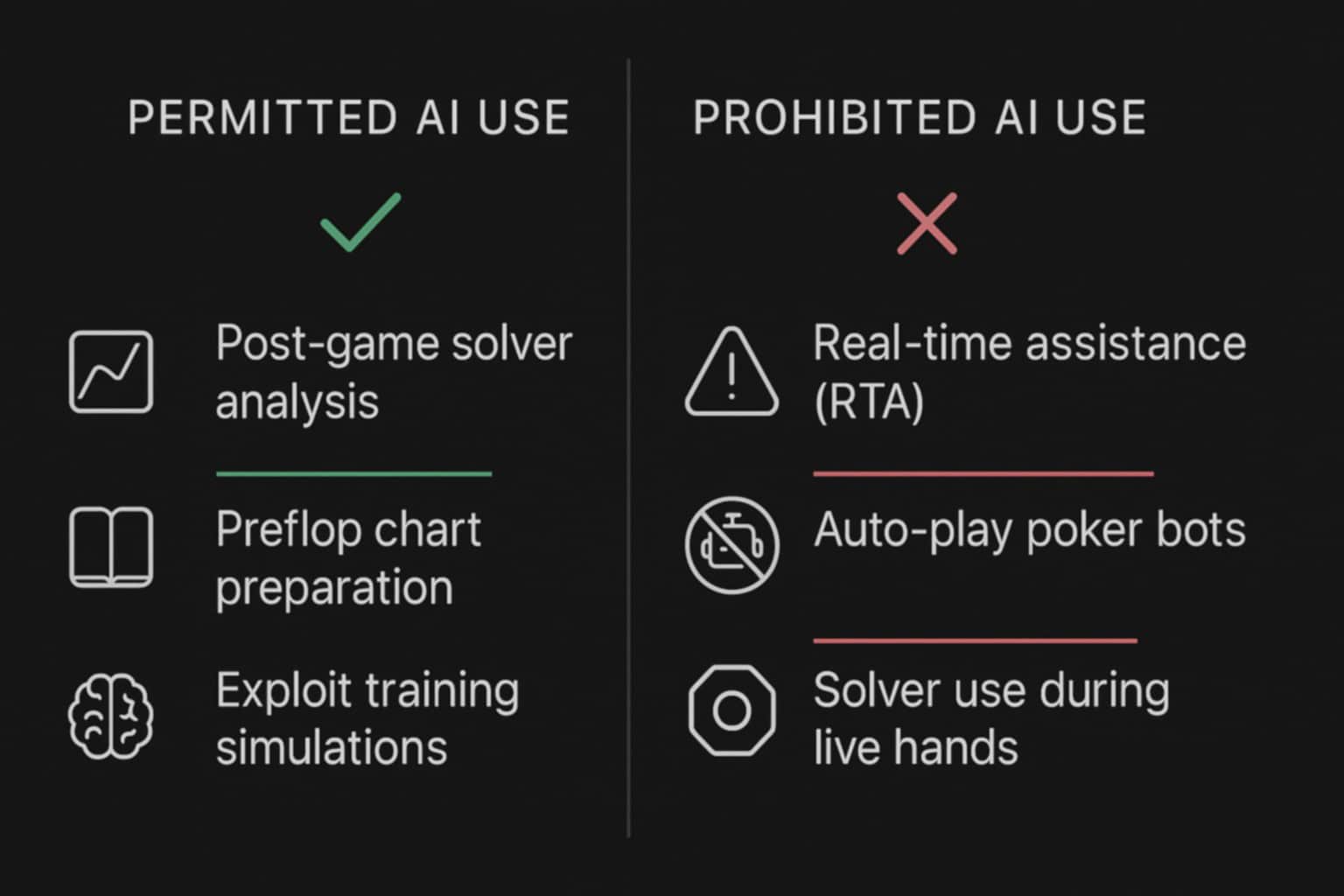
The Gray Zone: Human-AI Hybrids
Here’s where it gets really interesting.
Some top players are experimenting with a new kind of prep:
- They run thousands of sims pre-tourney.
- Build decision trees based on stack size, position, ICM pressure.
- Memorize or internalize common spots.
Then they play fast, intuitive, GTO-like poker – but without real-time AI help.
Others use AI to build custom HUDs:
- Tagging player types via clustering models
- Auto-generating exploit notes mid-session
- Tracking tilt patterns and time-based leaks
These setups stay (mostly) within ToS rules – but still offer a massive edge.
It’s not poker against bots. It’s poker with bots in your back pocket.
The Future: AI-Enhanced Pros vs Dumb Solvers
What’s coming next?
Expect a shift from pure solvers to hybrid decision systems:
- Blending exploit theory with GTO baselines
- Real-time mental modeling (e.g., “Is this opponent rattled?”)
- Tools that give feedback after every hand, like a digital coach
Some startups are already working on deepstack ai tournament training platforms, while others are integrating AI into live tells analysis.
In the next few years, you’ll see:
- More tournaments won by players with an AI-prep routine
- Fewer predictable “solver-bots” who always c-bet 33%
- A bigger gap between average regs and AI-literate pros
Adapt or fade.

Should You Use These Tools?
Yes – but use them wisely.
Use AI to:
- Study solver lines vs pool tendencies
- Build your own poker bot intuition
- Practice ICM scenarios
- Create exploit-heavy plans vs common mistakes
Don’t use AI to:
- Play for you
- “Look up” hands mid-tourney
- Gain unfair edge during live play
Poker is still a human game. AI is a booster, not a replacement.
Final Word: AI Tools Won’t Win for You – But They’ll Teach You How to Win
Whether you’re just diving into solvers or considering building your own ai poker bot, remember this:
AI doesn’t make decisions for you – it helps you understand why a decision is strong.
The more you train, simulate, and test… the more your own play begins to feel optimal.
And when you finally make that sick call on the bubble – not because a chart told you to, but because you knew – that’s not just GTO.
That’s growth.
